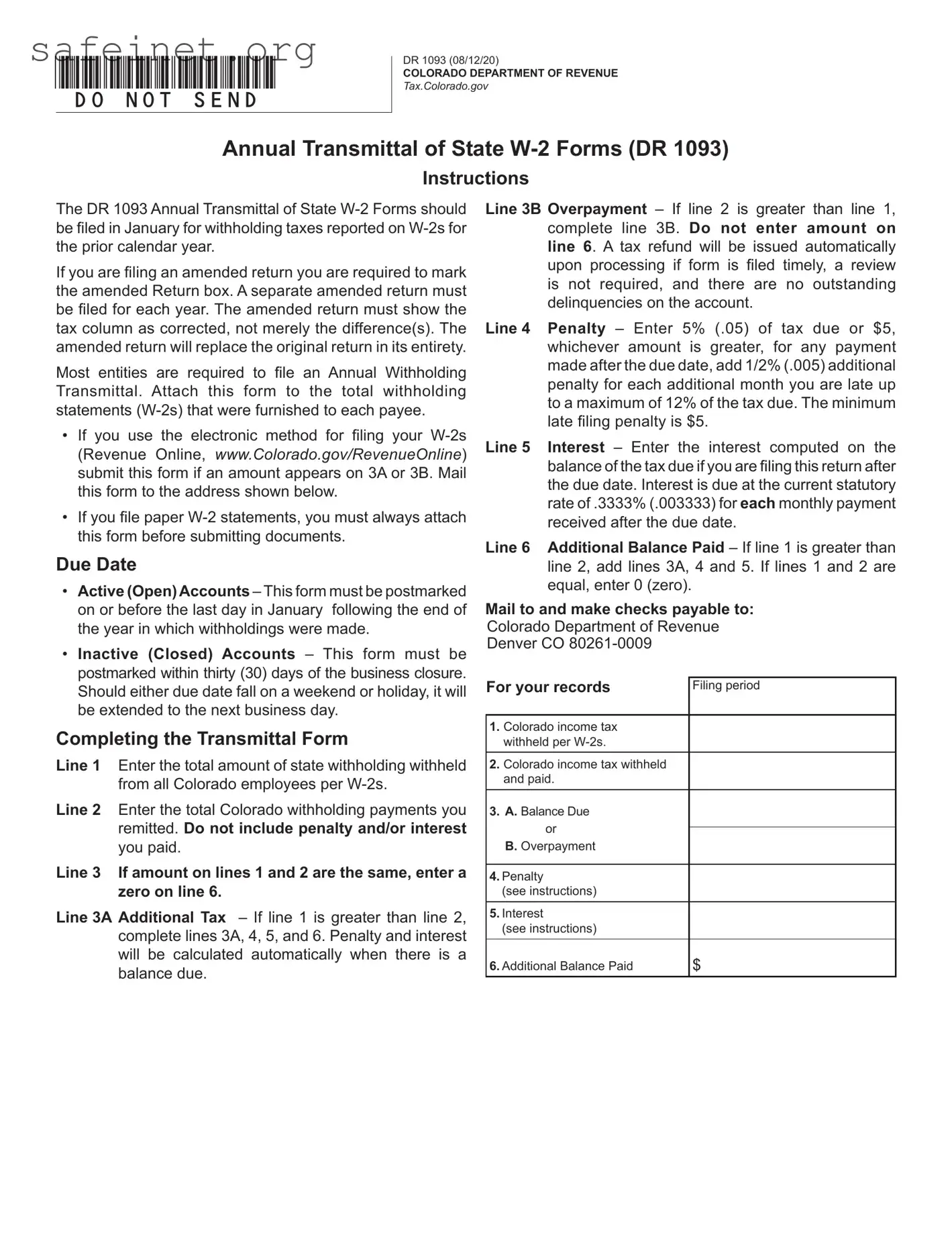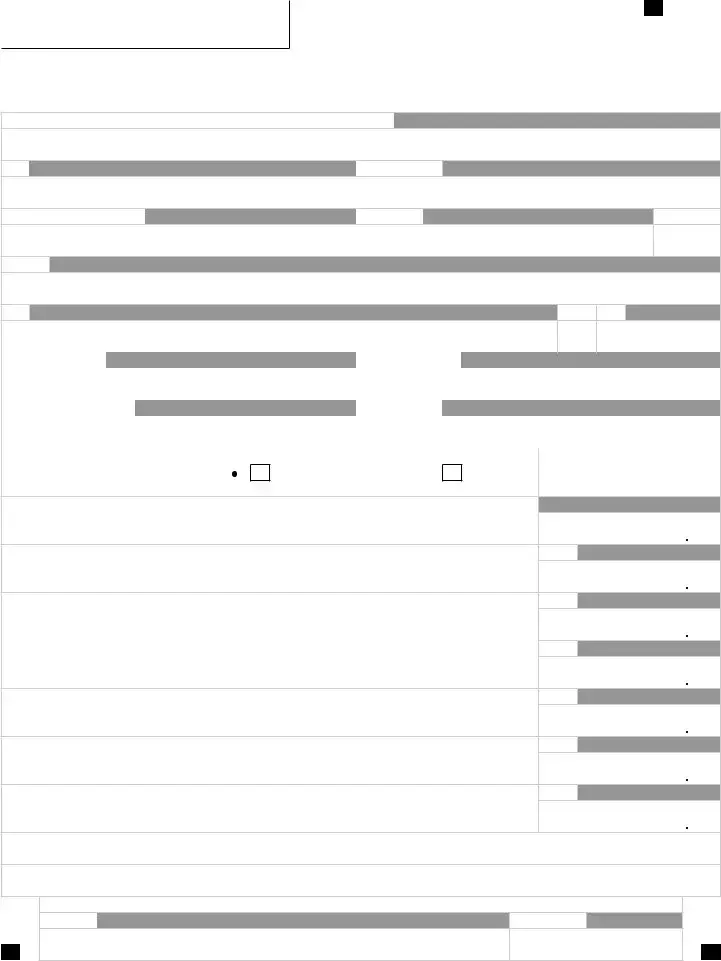The DR 1093 form serves as an annual transmittal for state W-2 forms, much like the IRS Form 941. Businesses use Form 941 to report income taxes, Social Security tax, or Medicare tax withheld from employee's paychecks. This form is also filed quarterly, which contrasts with the annual requirement of the DR 1093. Yet, both forms ensure that the proper taxes are reported and submitted to the appropriate authority, making them fundamental to accurate payroll processing and tax compliance.
The DR 1093 is akin to Form W-3, which is the transmittal form for all W-2s issued by an employer to the Social Security Administration. While W-3 is used to summarize the individual W-2 forms for federal purposes, the DR 1093 does so at the state level. Both forms require accurate totals of the wages and withholding information and must be filed alongside their respective W-2 forms, ensuring comprehensive reporting to both federal and state agencies.
Another document similar to the DR 1093 is Form 1099-MISC, used to report payments made to independent contractors. While the DR 1093 deals with employee wages and withholdings, the 1099-MISC focuses on non-employee compensation. Nonetheless, both forms play a significant role in reporting earnings, providing detailed financial information to the IRS and ensuring compliance with tax regulations for different types of workers.
The Colorado DR 1093 also parallels Form 945, which reports federal income tax withheld from non-payroll payments like pensions and annuities. Both documents highlight the need for accurate reporting on withholdings, although they cater to different payment structures. While DR 1093 is centered on employee wages, Form 945 covers other types of income, providing tax authorities with comprehensive data on total withholding activities within a filing period.
In the realm of state taxes, the DR 1093 resembles Form ST-3, which is used for reporting sales tax withheld by businesses in some states. Though not specifically to employee wages, the purpose of accurate tax reporting remains consistent across both forms. Each facilitates the collection of state revenue and supports compliance efforts for businesses, underscoring the importance of precise accounting in different financial contexts.
Moreover, the DR 1093 can be compared to Form 660, which is utilized for reporting Colorado's state taxes withheld but is specific to contractors and certain types of payments. Both forms aim to detail withholding activities to ensure state revenue is collected appropriately. They serve distinct purposes but follow similar principles in reporting and accountability to meet tax obligations efficiently.
The DR 1093 is also similar to form CT-1, which is filed by employers covering railroad retirement tax withheld. While this document targets a specific group of employees in the railroad industry, it shares similarities with the DR 1093 in terms of being an annual summary of withholdings. Both forms maintain thorough records, contributing to the larger framework of employer responsibilities in tax reporting.
Finally, the DR 1093 has similarities with Form 1095-C, which provides information about health insurance coverage offered by large employers. While the focus is different—health care vs. wage withholdings—both forms are crucial for compliance with federal and state regulations. They share the function of serving as declarations of compliance, illustrating the breadth of information employers must report to government entities for various fiscal responsibilities.


